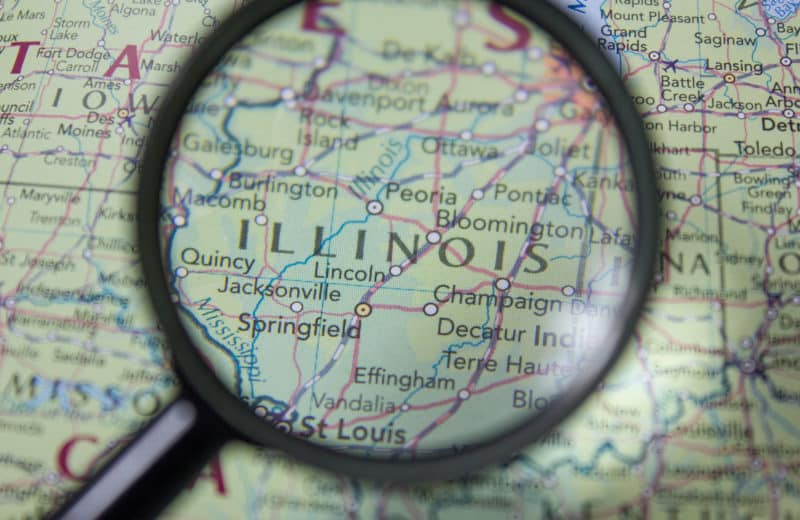By Miriam Cross, Kiplinger Personal Finance
After an emergency-room visit in 2014 revealed a bleeding blood vessel in his brain, Terry Lane had a choice: He could take pills for the rest of his life in hopes that the seizures caused by the bleeding would cease, or he could have brain surgery to remove the troublesome cluster of blood vessels. When the seizures didn’t let up, he chose the latter.
Lane’s company offered employees the option of heading overseas for medical care, all expenses paid. A magazine article he had read years before about global health care had piqued his interest. After speaking with a surgeon in Costa Rica, Lane felt confident enough to undergo his operation there in 2015. “The doctors, nurses and hospital were great,” says Lane, of St. Joseph, Mo. “If I had to do it over again, I wouldn’t hesitate.”
Trusting your heart, joints, teeth — or in Lane’s case, his brain — to a doctor thousands of miles away in another country may seem like a daunting proposition. Moreover, traveling for medical care involves risks that don’t exist if you stay in the United States. But if you put in the legwork to vet your provider and facility (and you’re up for an adventure), you can save between 30 percent and 90 percent of the cost for the same procedure in the U.S., with a comparable outcome. Lower costs of living, lower wages and government-subsidized health care keep prices cheap in other countries. Patients Beyond Borders, a consumer resource for medical travel, estimates that 1.7 million Americans will travel overseas for elective medical care in 2017.
Match care to country
Once, people who didn’t have insurance were the prime candidates for medical tourism. Their numbers have shrunk since the Affordable Care Act, but going out of the country for treatment or tests can still make sense if you have a policy with high out-of-pocket expenses or a low maximum (as with dental insurance), or you are seeking a procedure that isn’t covered by your insurer. Noncovered medical services generally include cosmetic surgery, infertility treatments, weight-loss surgery, nonemergency cardiovascular or orthopedic surgeries, and certain types of dentistry, such as cosmetic dental work.
Destinations abroad are flush with physicians eager to perform those procedures. Thailand, Malaysia, Singapore, South Korea and India are hot spots for complex surgeries, including cardiology and orthopedics. Israel shines for its low-cost fertility and reproductive treatments, and Hungary has a booming dentistry sector.
If a 10-hour flight puts you off, you have plenty of good options closer to U.S. borders. “Dental and cosmetic surgeries have always been available in Latin America and the region, but reliable medical treatment for complex conditions is now more widely available,” says Josef Woodman, CEO of Patients Beyond Borders. For instance, the 104-bed Health City Cayman Islands, which opened in February 2014, covers a swath of specialties, from thoracic surgery to bariatrics. Colombia offers some of South America’s best cardiovascular care.
As in other non-U.S. countries, the cost of care in Latin America and the Caribbean is a bargain compared with care stateside. In vitro fertilization fees at the Barbados Fertility Centre total about half of what you would pay in the U.S. And hospitals and clinics in Costa Rica and Mexico have offered prices about 40 percent to 65 percent lower than you would find here.
Not every procedure meshes well with overseas travel. Treatments that require follow-up visits are not only inconvenient but also involve more travel costs; procedures that are unapproved in the United States, such as stem cell therapies, may be extremely risky. And never shop around on price alone; quality always comes first. Once you factor in all the costs of medical travel for you and a companion — including flights, post-operative lodging, visas, transportation and meals — you may find it’s more economical or just less hassle to stay put in the U.S. Experts recommend pulling the trigger if what you save exceeds $6,000 or about 50 percent or more of what you would have paid here.
Expect concierge service
Going under the knife is nerve-racking enough without adding an unfamiliar setting and language to the mix. Some foreign hospitals and clinics — especially those that court foreign patients, such as Bumrungrad International Hospital in Thailand, Prince Court Medical Centre in Malaysia and Hospital San Jose in Mexico — offer patient-services centers to smooth the way. Staff can match you with an interpreter or case manager, arrange for airport pickup and drop-off, nab you a discount at a nearby hotel, or help you extend your visa. You may even have access to a separate (and nicer) entrance and comfy waiting lounges. Friends and relatives who join you can enjoy well-prepared food, caregiver suites and assistance with sightseeing excursions while you are laid up in bed. You can also expect fewer patients for every doctor or nurse and more attentive post-op care than in the U.S. During your recovery, you’ll probably stay at a nearby hotel or resort. In Costa Rica, “recovery retreats” model the luxuries of a hotel, with one big exception: The staff are nurses and guests are patients.
Why the extra effort to court foreign patients? A couple of reasons, according to Patients With Passports (Oxford University Press), by I. Glenn Cohen: to make money (from the patients’ tourism dollars or because facilities can charge foreign patients more than they can charge domestic patients) and to justify building up a country’s health care infrastructure.
Vet the credentials
Searching the internet for “cheap spinal fusion” will only get you so far on your road to thrifty medical care. For an overview of where to go and how to plan your trip, consult Josef Woodman’s “Patients Beyond Borders” handbook (Healthy Travel Media), which reviews top facilities around the world. You can also use the treatment and facility search tools at www.patientsbeyondborders.com.
One way to narrow your options is to choose only hospitals or clinics accredited by major agencies that set rigorous standards for patient quality and safety. The U.S.-based Joint Commission International (JCI) is considered the gold standard for accreditation; you can search hundreds of facilities it has approved at www.worldhospitalsearch.org. Other respected accrediting agencies include Acreditas Global, the international arm of the Accreditation Association for Ambulatory Health Care, as well as the American Association for Accreditation of Ambulatory Surgery Facilities International. Both accredit smaller outpatient or specialty clinics, which are attracting increasing numbers of foreign visitors.
Some highly regarded facilities are not accredited by these international agencies, but you should investigate their standards carefully. Start by hunting online for any complaints or negative news reports that represent red flags. Hospitals may tout partnerships with prestigious U.S. medical centers, or they may highlight the number of U.S. board-certified physicians they have on staff, but these credentials are not particularly valuable on their own. Before booking an appointment with a physician or surgeon, ask about his or her background (including education and training) and for references from past patients. Also ask how many similar procedures he or she has performed, says Woodman. The higher the number, the better.
For cosmetic procedures, turn to a surgeon who is certified by the International Society of Aesthetic Plastic Surgery. (You can find more tips for medical tourists here.) In its “Traveler’s Guide to Safe Dental Care,” the Organization for Safety, Asepsis and Prevention (OSAP) has a list of questions that will put you on the right track with dentists. (Go to www.osap.org and click on “Knowledge Center,” then “Travel.”) With some treatments, such as dental implants, you’ll also need to research the materials the provider uses and how the quality compares with materials used in the U.S.
While considering candidates, assess the physician’s or dentist’s fluency in English and responsiveness by requesting a conversation via Skype or over the phone. When Michael Lepley of Silver Point, Tenn., was looking to get his left hip replaced in 2014, he researched his options in the Caribbean, South America and Southeast Asia. Part of the reason he was drawn to Health City Cayman Islands was easy communications with its English-speaking staff. “Anytime I had questions, I got on Skype with Health City,” he says.
Your regular doc is another key resource. “People are afraid to talk to their primary-care physician about something like this,” says Renee-Marie Stephano, president of the Medical Tourism Association. Don’t be. Your doctor may be able to refer you to overseas colleagues or put you in touch with patients who have had good experiences. Before you finalize your plans, ensure that your local doctor — even if not gung-ho about your choice to cross borders — is willing to communicate with your overseas provider and treat you upon your return if you need follow-up care.
Protect your investment
No matter how you’ve found your doctor or facility, once you’ve decided to go ahead with the procedure, scrutinize your informed-consent document for potential risks. You’ll also want to know how secure your medical records are once they leave the U.S. And recognize that if things go wrong, your legal options and protections are slim. “Part of the reason medical care is so much more expensive in the U.S. is because regulations are designed to empower patients,” says Sasha Issenberg, author of “Outpatients: The Astonishing New World of Medical Tourism” (Columbia Global Reports).
To minimize health complications, block out enough time in your trip for recovery, and follow your overseas doctor’s orders about physical therapy and medications. Think ahead about your plan if complications do arise: How will your foreign provider or local doctor help? What are the potential costs of, say, returning for a corrective procedure? (Would the facility fly you back?) What about redoing a procedure in the States? Prepare to take scrupulous notes overseas and get all exit papers (including scans, consultations and prescriptions) in English.
After you’ve booked your procedure, you will likely be asked to pay a 50 percent deposit and the rest upon arrival, rather than after the procedure. If you are asked for the entire payment in advance, negotiate to put half in escrow or to find another way to avoid paying everything up front. You can use tax-free dollars from a health savings account or flexible spending account to pay for care (and some of the travel), provided the procedures meet Internal Revenue Service criteria for qualified medical expenses. (To see what the IRS permits, visit www.irs.gov/publications/p502.) Or you can deduct the cost of qualified procedures that exceed 10 percent of your adjusted gross income.
See the sights (and the doc)
There are certainly worse places in the world to recover from surgery than, say, the gulf coast of Thailand. But recovery time and restrictions on alcohol, sun exposure or exercise mean you probably won’t be sipping cocktails on the beach to celebrate your successful surgical procedure.
One way to get the best of both worlds is to incorporate light, non-surgical procedures, such as hearing and vision checkups, dental cleanings, and health screenings, into leisure trips. Your detour from sightseeing might take only a few hours and cost a fraction of the American price. Numerous international health facilities and tourism boards band together to market these programs to travelers, so do a little research before you depart. Recently, for example, Thai medical centers offered several comprehensive health and dental checkup packages to foreigners. Passing through Incheon International Airport in South Korea? Speedy dental whitening, health checkups and light cosmetic treatments are available a few miles from the airport. Malaysian medical centers offer “well man” and “well woman” screening packages as well as travel-and-health bundles. You can usually find these non-surgical offerings in major tourist cities and resort towns.













